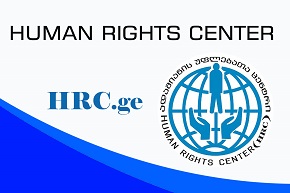(New York, September 3, 2008) – On August 21, 2008, Human Rights Watch reported a series of attacks with cluster munitions around four towns and villages in Georgia’s Gori district. Human Rights Watch attributed all the strikes to Russian forces, but upon further investigation has concluded that the origin of the cluster munitions found on August 20 in two of the villages – Shindisi and Pkhvenisi – cannot yet be determined.
Human Rights Watch’s finding that Shindisi and Pkhvenisi were struck by Russian attacks on August 8 was based on the accounts of nearly a dozen witnesses, interviewed separately, who said that air strikes on Georgian armored units in the area were followed by extensive cluster munition strikes. There were no Russian ground forces reported in the area at that stage of the conflict.
Human Rights Watch researchers in Shindisi on August 20 found unexploded cluster submunitions, commonly known as Dual-Purpose Improved Conventional Munitions (DPICMs), and initially identified them as Russian. However, those submunitions were later identified by the Norwegian Defense Research Establishment (NDRE), based on Human Rights Watch’s photographs, as M85 DPICMs, which have not been reported to be part of Russia’s arsenal. NDRE is a government-sponsored institution that does research and development for the Norwegian Armed Forces and is recognized for its expertise in cluster munitions.
On August 31, the government of Georgia informed Human Rights Watch that it had a stockpile of ground rocket-launched cluster munitions that have M85 submunitions. The Georgian government described them as being a different type of M85 submunition than those found by Human Rights Watch and stated that these were the only cluster munitions in the Georgian arsenal.
Neither Georgia nor Russia has claimed use of the M85s found in Shindisi. Russia denies any use of cluster munitions in Georgia. Georgia states that it used cluster munitions in the August 2008 conflict only during an attack on Russian military forces near the Roki tunnel.
This clarification does not affect Human Rights Watch’s findings on August 15 that Russia used aerial cluster bombs to attack the village of Ruisi and the town of Gori on August 12. Eleven civilians were killed and dozens more injured in these two locations. In Ruisi, Human Rights Watch researchers found submunitions that they identified as PTAB 2.5M, which are known to be in Russia’s arsenal. Human Rights Watch based its findings on visual identification of the submunitions and the cluster bomb carrier in Ruisi, craters typical of submunition impact, and accounts from Georgian victims in both towns, as well as doctors and military personnel. The Russian government has yet to adequately respond to these findings.
Human Rights Watch will continue its investigation into the use of cluster munitions in Shindisi and elsewhere by all sides during the armed conflict.



